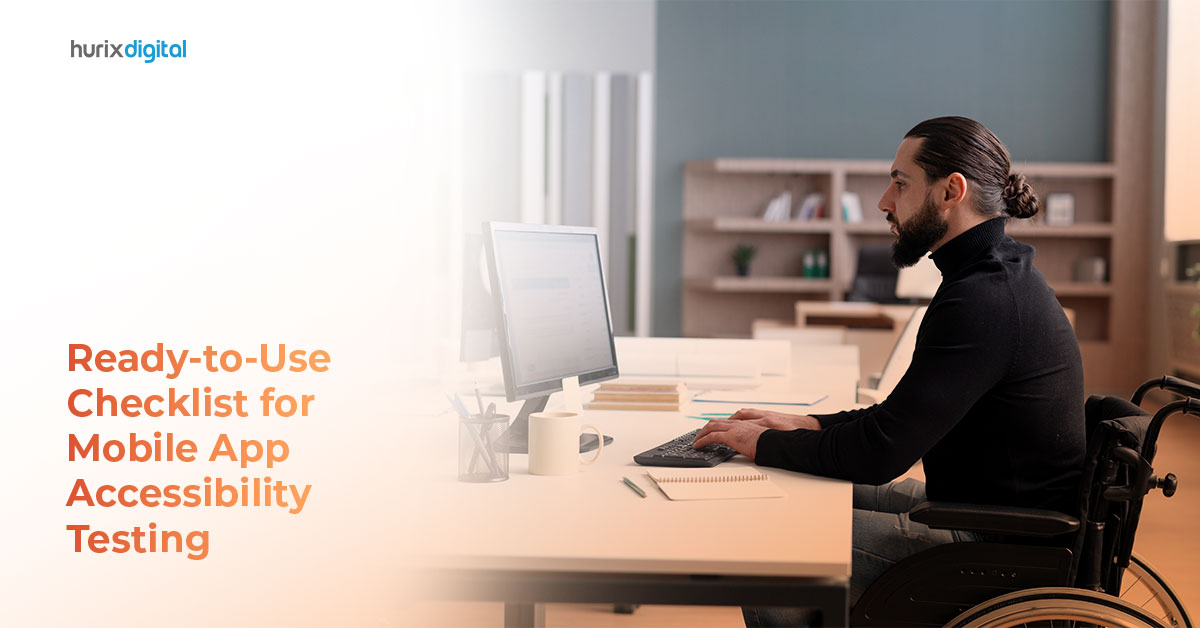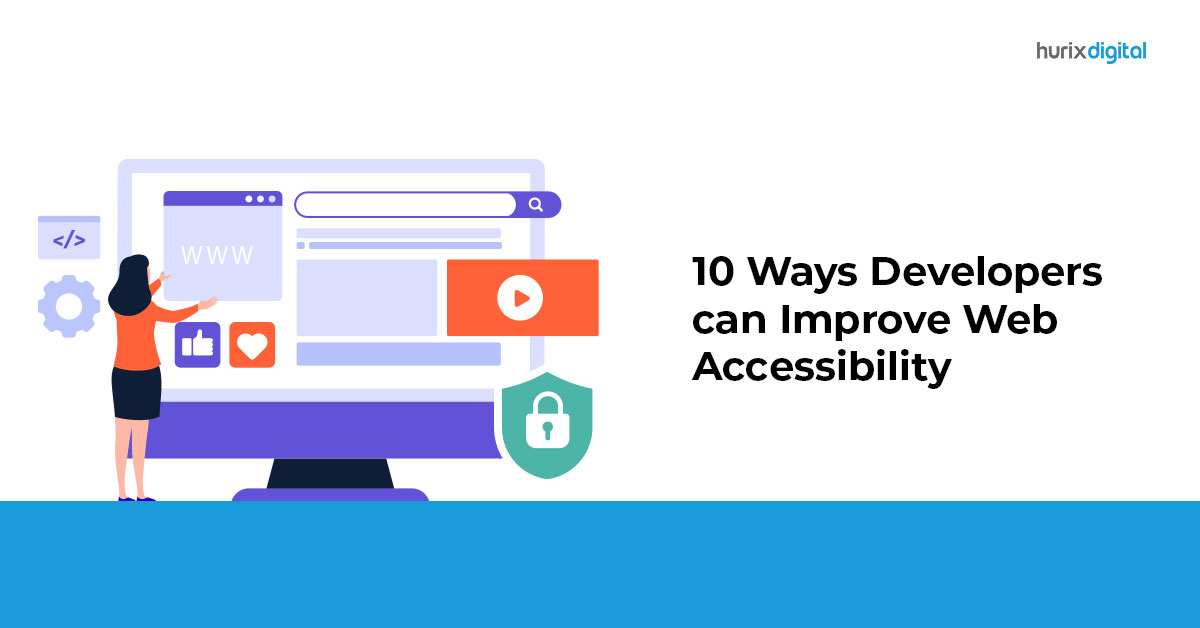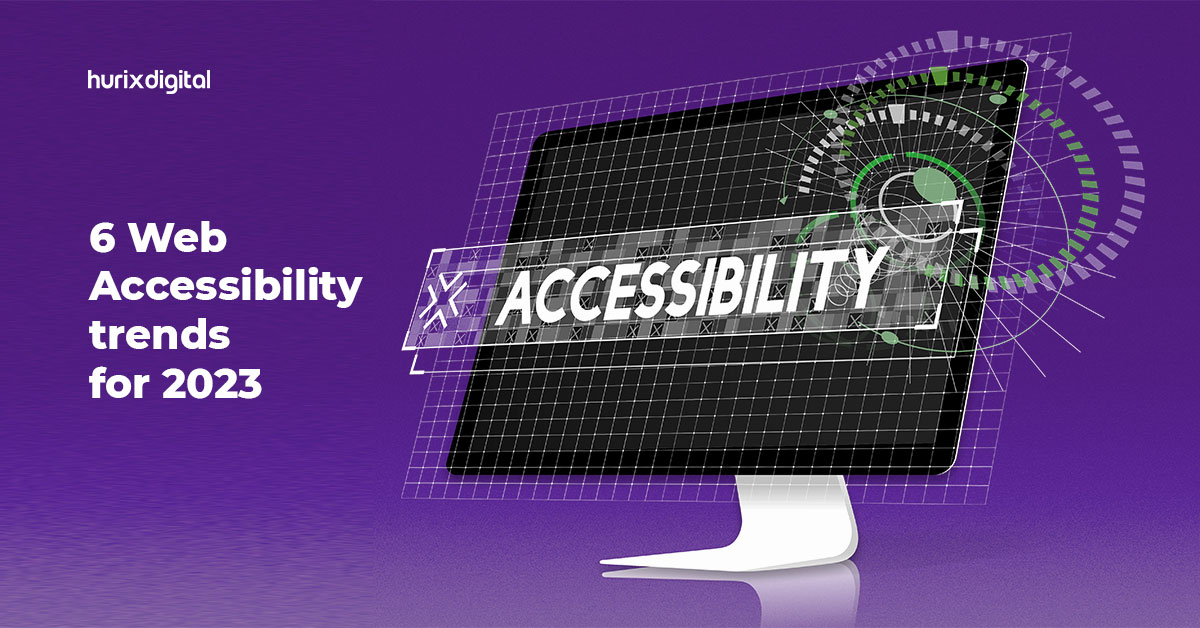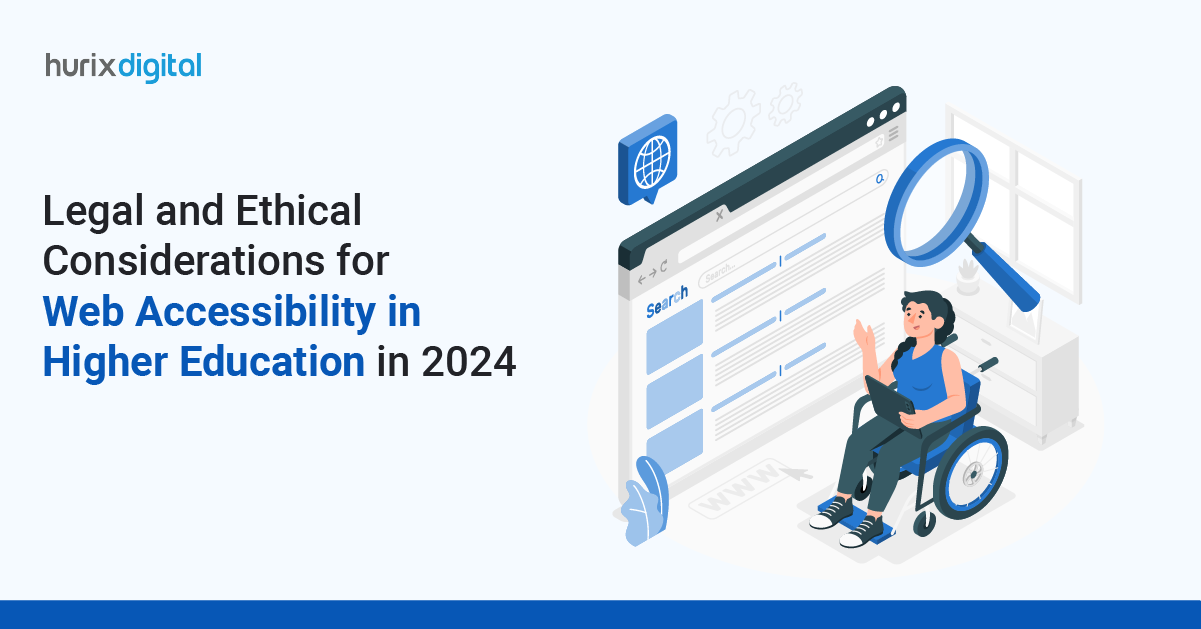
The Only Checklist You Need For Mobile App And Web Accessibility Testing
Summary
This article provides a comprehensive checklist for testing mobile apps and websites for accessibility, ensuring that digital products meet the required standards and provide an inclusive user experience.
If you’ve ever hesitated to let a specially-abled person use the mobile app you’ve created, this article is for you. Why? Because there are 1.3 billion people with some disability, about 16% of the world’s population. And 91% of people with disabilities use a smartphone.
A study revealed that accessibility issues were massive in apps, and most developers were not aware of different kinds of disabilities. But don’t worry. We’ve got you covered with a thorough checklist for mobile app and web accessibility testing.
This checklist that we have created in this article could be your go-to resource for creating digital experiences that are inclusive and for all. It is comprehensive and covers all the crucial aspects of accessibility testing so that you can develop and optimize your mobile apps and websites for maximum reach and impact.
Table of Contents:
1. What is Mobile Accessibility?
2. Why is Mobile Accessibility Important?
3. What Can You Achieve Through Mobile Accessibility Testing?
4. The Ultimate Checklist to Follow For Mobile App and Web Accessibility
What is Mobile Accessibility?
Not everyone interacts with their mobile devices in the same way. Some people might have visual, auditory, cognitive, or motor impairments, making using certain apps or websites a real challenge. So, what are mobile app and web accessibility? It is about adapting the mobile app/website for everyone to have a seamless experience.
This could include using assistive technologies like magnifying the text, allowing text-to-speech functions, color adjustments, etc.
Also Read: The Importance of Web Accessibility and How Hurix is Making a Difference
Why is Mobile Accessibility Important?
Firstly, mobile app and web accessibility are about equal opportunity and inclusivity. Everyone has the right to use digital tools to advance in life or make life easier. Secondly, it can drastically improve user-friendliness and navigation of your mobile app.
Thirdly, it can be good for business as it caters to a broader audience. And lastly, just like accessibility for website functions, to meet legal and ethical compliance with acts and regulations like the Americans with Disabilities Act (ADA) and the Web Content Accessibility Guidelines (WCAG).
What Can You Achieve Through Mobile Accessibility Testing?
Through the mobile app and web accessibility testing, you can do wonders for your app and organization.
- Get greater reach by allowing a larger audience to access the app. This means more potential leads.
- Stay clear of hassles with legal regulations and compliance.
- Build a better brand reputation that is ethical and promotes inclusivity.
- Increase loyalty and customer retention.
- Gain a competitive advantage.
- Enhance user experience for everyone.
The Ultimate Checklist to Follow For Mobile App and Web Accessibility
Once you take care of these parameters on your mobile app, it will automatically become accessible.
1. Titles and Text
- Make sure your app has a title.
- Implement an ARIA (Accessible Rich Internal Applications) which is in HTML and shows the structure of the app or a page, mentions roles or properties on the app like search, navigation, banners, etc.
- Maintain hierarchy in the headings.
- Choose easily readable fonts and make the text size adjustable.
2. Touch Events
- Don’t use the touch down-event for any activity.
- If the up-touch starts an action, offer the choice to stop or undo it.
- It can also have the option to reverse any event due to the down action right after such an unwanted event has occurred.
- Keep the touch targets like buttons and links large enough (minimum 9 mm height and width each) for the users to avoid accidentally touching something else.
- The interactive elements should be placed so anyone can access them (the same for left and right-handers, for example). For example, buttons could be at the center.
- You can also add accessibility options to use the app. For example, there are hands-free technologies now where users can use audio to interact. Or allow users to navigate through the keyboard or other external devices.
3. Color Contrast
- Use sufficient color contrast between the foreground (think text) and background, as well as for interactive elements, to accommodate users with low vision or color blindness.
- Keep the foreground-to-background color contrast ratio at 4.5:1 for standard text and 3:1 for large text and icons.
- When the contrast ratio is low, it becomes difficult for specially-abled users to read.
4. Screenreader Compatibility
- Test your app with popular screen readers like VoiceOver (iOS) and TalkBack (Android) for visually-impaired individuals.
- You can ensure all elements are correctly labeled and the content is read in the correct order. If not, you can make changes.
5. Screen Sizes Optimization
- To allow the users to get the maximum out of the screen and not lose out on features because of zooming in, offer preset screen sizes to choose from that are designed specially.
- You can also reduce the amount of data present on each app page.
- Change the link text size according to the width of the app view.
6. Checking Time-Based Interactions
- Any app interactions should not be time-based to accommodate the needs of everyone.
- Instead, offer them the option to extend time if such interactions are necessary.
7. Consistent Layouts And Navigation
Maintaining consistent navigation throughout the app will make it easier for users to familiarize themselves with the interface and predict where elements will be located.
It can overwhelm many to readjust themselves to new layouts and adapt constantly.
8. Simplifying Data Entry
- Allow users to enter data using methods other than text, like speech or multiple-choice questions.
- Information that can be auto-entered, like dates, can also help make the app more accessible.
- Using tools like auto-correct and autofill also goes a long way.
9. Test To Scale Up Your Accessibility
The most important part is to test your app with specially-abled individuals and get feedback from real people.
This can give incredible insight that automated tools might miss.
Get Started Now!
Now that you understand how to do mobile accessibility testing, you can use some of the best accessibility solutions available online to get started.
- Accessibility Inspector (iOS)
- VoiceOver (iOS)
- Color Contrast Analyzer (iOS)
- TalkBack (Android)
- Accessibility Scanner (Android)
- WAVE (Web Accessibility Evaluation Tool) (Android)
You can do one another thing to make it hassle-free. We can do the accessibility for you!
Unlock the power of inclusive mobile app experiences with Hurix Digital! Discover how our accessibility testing, helmed by experts, can help you create apps for everyone. Get in touch with us now!

Vice President – Digital Content Transformation. He is PMP, CSM, and CPACC certified and has 20+ years of experience in Project Management, Delivery Management, and managing the Offshore Development Centre (ODC).






